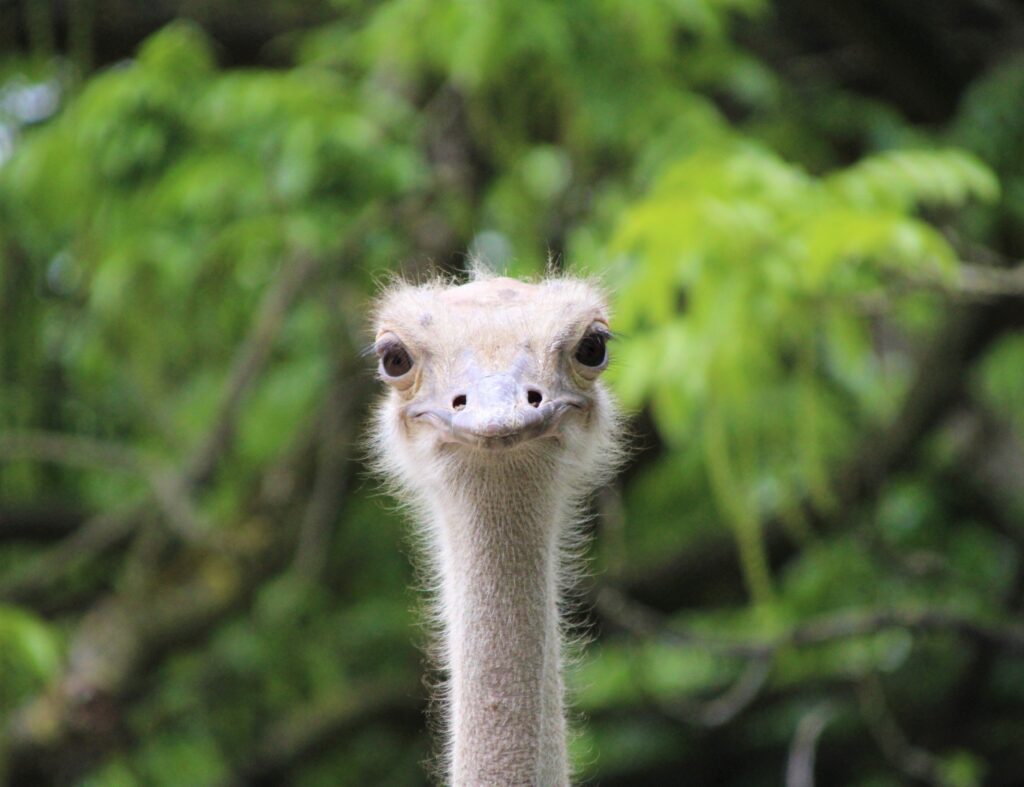Most of us grow up thinking the body is a flesh and blood organism made up of parts and systems. It is something that is described and researched, an object to be known. Rarely do we think of the body as something that knows things. Rarely do we ask the body for answers.
Does the body have answers? Does it have a subjectivity from which to speak? This narrative voice—the one unfolding in the language on the page right now—refers to the body as an “it.” This voice continues the assumption that the body is an object of knowledge, with the knower being the “I” that knows it (the body). This language perpetuates the body as an “other,” distinct from the seat of my core self.
The “I” of course in this scenario is the mind—specifically the intellect, the conventional knower. By virtue of the mind’s association with higher processes, the body becomes an object to be known. Medicine and the sciences are comfortable with the idea that this intellect can construe the body as an object of knowledge. Religion, too, has its versions of othering the body. In his famous essay “On Immortality,” William James argues that the soul is in, but not of, the body. The Buddhist Hevajra Tantra declares that great wisdom (mahājñāṇa) “lives in the body… but is not of it.” In many ways, across human history, the mind and body have stayed in their separate domains.
Historically in the disciplines of philosophy, cognitive science, and the humanities to some extent, the “I” has been treated as an independent cognition, an entity that can in theory be isolated from its organic home, or sometimes as a transcendent feature of being human that is superior to the animal nature of the flesh. This prioritizing of cognition is often not explicit, but persists—even now—as an implicit bias. Mind, the knower of body, has the keys to intelligence and problem solving. Mind has the answers. To sequester the system for study has seemed sensible.
When we pay attention to our body,
we are immediately confronted with
the truth that we are animals, that
we are part of a delicate balance,
and that we are mortal.
In recent decades, this bias has been turned on its head (so to speak) in the fields of neuroscience, cognitive science, and psychology. Neuroscience now recognizes that the brain and the body are so intimately intertwined that they cannot be thought of separately. Cognitive science, which as recently as thirty years ago was a field intent on understanding cognition as a closed system, has begun—based on a broad swath of interdisciplinary research—to embrace the theory that cognition is embodied, embedded, extended, and enactive (the 4E cognition model 1Newen, A., De Bruin, L., & Gallagher, S. (Eds.). (2018). The Oxford Handbook of 4E Cognition. Oxford University Press.). These ideas are a fringe movement no longer. Even psychotherapy is now embracing more embodied techniques to treat trauma and to supplement talk therapy. Geneticists recognize that many of the traits that we think of as “personality” are inherited from the bodies that provided our DNA.2Røysamb, E., Nes, R. B., Czajkowski, N. O., & Vassend, O. (2018). Genetics, personality and wellbeing. A twin study of traits, facets and life satisfaction. Scientific Reports, 8(1), 1-13. https://doi.org/10.1038/s41598-018-29881-x
Academic fields are coming around in theory and practice to the perspective that the body has a powerful role to play in understanding cognition, in understanding consciousness, and cannot ultimately be separated from it. The body and mind are on a fast collision course to bodymind. Yet at the same time that the fields of science and the humanities (and some contemplative teachers) continue a turn towards embodiment and an extended model of cognition, the way we live as humans has—for many of us—become less embodied. We have created machines that make many of the bodily engagements we used to rely on to survive unnecessary.
A beloved Zen proverb says, “Before enlightenment, chop wood, carry water. After enlightenment, chop wood, carry water.” One way to interpret this proverb is that enlightenment is not exotic. It does not get us off the hook. But there is also another interpretation: before enlightenment, move your body. After enlightenment, move your body. Enlightenment is not a disembodied stasis away from quotidian activities. The proverb reminds us of a world we once inhabited, a world in which the human body was working hard to ensure our survival. In developed countries, most of us no longer chop wood and carry water. We bump up the thermostat and turn on our faucets. The body’s involvement in our daily survival has become so minimal that our bodies suffer pervasively from a collective sedentariness that has come to impact our longevity, not to mention our physical and mental well-being.3Van Uffelen, J. G., Wong, J., Chau, J. Y., Van Der Ploeg, H. P., Riphagen, I., Gilson, N. D., … & Brown, W. J. (2010). Occupational sitting and health risks: A systematic review. American Journal of Preventive Medicine, 39(4), 379-388. https://doi.org/10.1016/j.amepre.2010.05.024
Simultaneously, we have developed machines to mimic and augment human cognition—machines that are capable of amazing feats of calculation, problem solving, and communication. These machines mirror back to us the most discursive aspects of our cognitive lives, a cognition in some ways made better and more powerful, but also a cognition divorced from organic life. This budding artificial intelligence is capable of capturing, even imprisoning our attention at times. These machines are capable of competing for our loyalty, redirecting our attention when we turn for too long to people in the real world, to our senses, to our bodies.
The end result of this relationship with greater convenience and extended cognition is that we live in an age of disembodiment. We are a bit like James Joyce’s fictional character Mr. Duffy who lived “a short distance from his body.” When we hear of such a character, it is easy to relate. Each of us, in this human experience, have at times felt out of touch with our own body.

Disembodiment
What is disembodiment? The answer to that question depends on whom you ask, and which field of study you consult. In the field of psychology, disembodiment is currently understood as a state of dis-integration of body and mind. One team of prominent psychologists who study schizophrenia define it as the “disturbance and alienation of the habitual or implicit bodily functioning on the level of perception, action, or intercorporeality.”4Martin, L. A., Koch, S. C., Hirjak, D., & Fuchs, T. (2016). Overcoming disembodiment: The effect of movement therapy on negative symptoms in schizophrenia—A multicenter randomized controlled trial. Frontiers in Psychology, 7, 483. https://doi.org/10.3389/fpsyg.2016.00483 In simpler language, within psychology, disembodiment seems to be a generic word for experiences of losing track of somatic feeling, the body’s movements, or the relationship of one’s own body to other bodies.
While this definition emerges from the science of pathology, the state described might sound kind of familiar. As a meditation practitioner, I notice the signs of disembodiment in myself as a sense of being “up in the head,” entangled in the trains of thinking that pass through the mind. This does not seem to be a choice. Thinking has a gravitational pull that draws us in. We not only believe almost everything we think, but we also react to our thoughts. This is not a reactivity to the outside world, but a reactivity to the picture show inside. We become so used to this mental self-stimulation that we forget there is another way to exist in the world. We lose touch with the present moment sensory field, what is happening right here, right now. In periods of distraction, we lose track of where the body is in space, our breathing, the sense of being grounded.
As a contemplative, I am drawn to define disembodiment as a way of being that filters out the signals received from the body in the present moment, in favor of attention focused on the discursive activities of cognition. In other words, disembodiment is a state of grasping at the conceptual field in a way that subverts attention to the sensorial and interoceptive fields. In a state of disembodiment, rain might be pattering above on the roof while a bird sings outside our window. While our ears “hear” these sounds, our mind does not register the hearing or its significance; instead, the mind has been lost in thought, ruminating on a disagreement we had with a colleague at work, for example. When a friend nearby says “Hey did you roll up the car window?,” we are jolted into noticing that the rain has been pattering for the last five minutes.
Disembodiment as a state of being “up in the head” has implications for how we perceive time. Not only is the sense field subverted by conceptual enmeshment, conceptual enmeshment subverts attention to the present moment itself, what is happening right here right now. As attention to the visual, auditory, and interoceptive field fades, so does our connection to a sense of being fully present. When we are in that memory of the disagreement with our work colleague, we are at that place and time in the past—there then, not here now.
When we lose track of the sense of being present, of being “here now,” we are simultaneously in a state in which body and mind become dis-integrated. When we check in on the mind and body subsequent to a “there then” experience, we notice that the attention seemed absorbed in the world of the mind’s making. The body seemed to recede or disappear. But once attention to the sensorial and interoceptive fields refocuses, we become aware of what is actually happening around us, and again we feel as if we have entered the time of “now.” We realize that we lost track of the body, and that attention had wandered to the narrative time frame of mind. When we again feel present, body and mind then re-integrate. There is this distinct sense of again becoming embodied.
These cognitive trains of thinking operate primarily in a linear mode, prioritizing memory, anticipation, and imagination. There is a strong sense of a past and a future when we are absorbed in the mind’s content. In other words, there seems to be a close relationship between our sense fields, our sense of time, and the subjective sense of mind-body integration. Disembodiment is not only about being “up in the head.” It is also a state of being out of touch with immediacy, with the perceptual present moment.
We get so used to being up in the head that the capability for somatic attention—sensing our bodies—deteriorates. We lose sensitivity to what is happening below the neckline, a kind of numbing out. This numbing out is a self-reported phenomenon that I’ve noticed over the years in meditation programs. It is not uncommon for participants in a meditation program to report, “I have been so up in the head, kind of numbed out to my body for a long time,” or “When you say ‘come down to the base of body’, I cannot feel anything.” These self reports happen when a person tries to intentionally direct attention to a part of the body for the first time.
It’s kind of a radical idea that your body can teach your mind.
What do we have to lose when we lose our own body? What worries me about the fact that our culture is becoming increasingly disembodied in practice, even while academic disciplines try to become more embodied in theory, is that so much is at stake. First, as our relationship to the felt body deteriorates and as we become less sensitive to the body’s signals, we are at risk to become more sedentary. At this point in history, the risks of a sedentary lifestyle are well known, and even the very act of sitting has now been identified as one of our greatest health risks,5Van Uffelen et al. (2010). on par with the risks associated with smoking.
Second, disembodiment may pose a risk to our emotional health. Recent studies on interoception (an innate capacity to sense the processes, feelings, and experiences of the interior body) have found a relationship between interoceptive awareness and emotional regulation. When interoceptive awareness is low, the ability to identify and regulate emotions is disrupted. Conversely, training in interoceptive awareness6Price, C. J., & Hooven, C. (2018). Interoceptive awareness skills for emotion regulation: Theory and approach of mindful awareness in body-oriented therapy (MABT). Frontiers in Psychology, 9, 798. https://doi.org/10.3389/fpsyg.2018.00798 leads to an ability to identify emotional states when they arise, and then regulate the state. So one of the issues at stake in our cultural condition of disembodiment is the ability to know and handle our emotional loads.
Third, a disassociation from the body excludes us from deep ways of knowing. The body has its own non-conceptual intelligence, so often overlooked or devalued in the face of the dominance of our conceptual engagement. The body knows when it is hungry, when it needs to move, what it needs to thrive. It communicates wisdom that comes through feeling and present-moment experience. When we lose the body, we lose connections to avenues of truth that a disembodied cognition can never access alone.
But something else, perhaps even more so, worries me about our culture’s disease of disembodiment—without embodiment, we might not survive the next several hundred years. Disembodiment takes us away from our sense of interdependence with the planet as an organic whole, and its flora and fauna, our fellow winged, hoofed, pawed brethren. It takes us away from the truth of our animal nature. When we pay attention to our body, we are immediately confronted with the truth that we are animals, that we are part of a delicate balance, and that we are mortal.
Reclaiming Embodiment
What would it mean to live in a world in which we understand that the body has knowledge and subjectivity? Or rather that the subjectivity we experience as cognition could—in a moment of perspective-shifting—take up residence in the body. This perspective-shifting, this re-situating of subjectivity, is both a theoretical exercise and a practice. As a theoretical exercise, we might begin by decentering the mind and reentering the body as a corrective, entertaining the possibility that the body, just like cognition, knows things and acts on what it knows.

Learning from alternate cultural models of embodiment might also shed light on and inspire new ways of framing our relationship to the body. Himalayan Buddhism provides a precedent for how we might theoretically reframe the body as a subject of reverence and dignity. The body, in tantric understanding, is often depicted as a mandala, a self-contained divine universe, with every substance (especially the ones to which we usually have aversion, such as blood, pus, feces) acting as consecrating nectars. The body, the Hevajra Tantra and later Buddhist commentators theorize, primordially expresses sacred rituals in its natural functions of gestation, digestion, and so forth.
Theoretically reframing the body as significant, valuable, and as a knowledge-holder is an important corrective to our usual habits of prioritizing cognition. But more important than theory is practice, because embodiment is not an idea. It is not a theory. It is a state of being. Embodiment is a malleable state of being in which you feel connected and attuned to your body and senses. It is a state of being that is meta-aware, which is to say attentive to the feeling body without deconstructing it. It is a state in which the mind listens to the body. Ultimately, it is a state of being in which the division between mind and body dissolves.
You feel embodiment when you drop down from your thinking mind into the feeling body. You feel embodiment when you are moving, walking, dancing, running, surfing, swimming, skiing. You feel embodiment when your skin tingles in a cool wind, or when you inhale the smell of pine in a dense forest, or when your feet scrunch grass between your toes. You feel embodiment when you are in touch with the present moment, when you are really here now.
How can we improve and deepen embodiment? First, we must admit that while the mind knows things, it does not know everything. We then become curious: What does our body know that the mind does not? We can only discover what the body knows by an act of receptivity, by listening deeply. Especially in Western cultures, we are pretty good at listening to the mind’s knowledge—our thoughts, ideas, and opinions. But many of us have not listened much to the body, or learned its non-conceptual language.
Listening to the Body
The recent research on interoception has begun to correlate improved interoceptive awareness with mindfulness.7Farb, N., Daubenmier, J., Price, C. J., Gard, T., Kerr, C., Dunn, B. D., … & Mehling, W. E. (2015). Interoception, contemplative practice, and health. Frontiers in Psychology, 6, 763. https://doi.org/10.3389/fpsyg.2015.00763 I think of mindfulness ultimately as somatic attention, as a widening of awareness to the felt sense field. This widening of awareness is not a thinking process. It is an act of listening to the body. Listening to the body involves dropping our attention—even pouring our attention—down from the push and pull of the thinking mind into the field of feeling and perception that is happening right now. This is a profound redirection of attention, away from rumination and towards a relaxed but focused awareness. That awareness is “listening” in the sense that it is receptive to the body’s trans-linguistic communication.
When you listen to your body in this way, you discover gems of wisdom held by your somatic field (body, sensations, emotions). These trans-linguistic knowings can actually teach your mind things it does not yet know or believe. For example, feeling your body’s weight on the earth can teach your mind that you are grounded. The mind does not necessarily believe that you are grounded. It might feel like you are swirling in a miasma of thought.
It’s kind of a radical idea that your body can teach your mind. This body can teach your cognitive mind about “you,” meaning your entire embodied self. This is something that the mind might resist, because not only does the mind want to know everything, it wants to manage and control everything. It believes it is separate from the body. That is one of the most challenging things about being human.
[Embodiment] calls me into intimacy with the planet, with the earth under my feet, the plants and the animals. It calls me into community.
Once you have shifted to a mode of listening to the body, or wanting to, you become its student. I have tried of late to be a close disciple of my body, to ask it what it wants and needs, to ask it to teach me. What has happened is this; it has shown me the way to awakening, at least the kind of awakening I need right now. It has shown me that meditation can be effortless.
To listen to the body, the mind must surrender some of its control, and even consider that it is not as separate from the body as it has believed. What can the body teach the mind? I would like to suggest four truths that the body is capable of teaching the mind, or maybe more accurately, four truths that shine through the bodymind.
- You are grounded. This is not an abstraction. You can feel the force of gravity right now, at this very moment, at the base of your body. If you bring your attention to the place where your body comes into contact with a horizontal surface—your feet on the floor, your thighs on the chair, or your bottom against a cushion—you will notice a feeling of groundedness, a stability. This groundedness can become an “aha” moment for the mind. Suddenly you are no longer spinning around in your thoughts, but you are stable and earth-bound.
- You are present. When you come down into your body, you notice that feeling and sensation exist. You are breathing. You are sensing the air on your skin. You are seeing and smelling. All these sensations are happening in the present moment through the medium of your body. This body is not sensing all this in the past. It is not sensing it in the future. Your body lives in the here and now. When the mind comes along for this ride, it discovers this truth: I can live in the here and now. If I do that, I will not miss my life.
- You are intuitive. The body is like a radar that receives signals and encodes them. While the mind often lies to us, the body usually tells the truth. You are intuitive in the sense that your body knows how you truly feel about things, even when your mind is telling you a totally different story. The body is also intuitive about others, and can help us access deeper resources of empathy and compassion.
- You are non-conceptual. We tend to believe that the most “real” part of the self is the thinker, the part of the self that is conceptual. We do not often notice that much of our experience is taking place in another realm: the realm where thoughts do not have the final say. The body lives in this realm. The body is not ruminating about the past. It is not worrying about the future. It is just feeling. It is open and expansive to its world. When you notice there is already a dimension of your life that is non-conceptual and therefore spacious, that can teach your mind how to let go of its own self-imposed boundaries.
Embodiment is not something that we either have or lack. We all exist on a continuum between being embodied and disembodied, and we can shift wherever we are. We can move the needle towards deeper embodiment in our daily lives. These shifts are what gradually drive us to take seat in our own life, to experience embodiment as a felt truth rather than an idea. For me personally, embodiment is not only about living a happier and healthier life, but rather it is what calls me into relationship with what it really means to awaken, personally and collectively. It calls me into relationship with my deepest, most authentic awareness. It calls me into intimacy with the planet, with the earth under my feet, the plants and the animals. It calls me into community.
This essay first appeared in Insights: Journey into the Heart of Contemplative Science and is reproduced with permission from the Mind & Life Institute.
References
- 1Newen, A., De Bruin, L., & Gallagher, S. (Eds.). (2018). The Oxford Handbook of 4E Cognition. Oxford University Press.
- 2Røysamb, E., Nes, R. B., Czajkowski, N. O., & Vassend, O. (2018). Genetics, personality and wellbeing. A twin study of traits, facets and life satisfaction. Scientific Reports, 8(1), 1-13. https://doi.org/10.1038/s41598-018-29881-x
- 3Van Uffelen, J. G., Wong, J., Chau, J. Y., Van Der Ploeg, H. P., Riphagen, I., Gilson, N. D., … & Brown, W. J. (2010). Occupational sitting and health risks: A systematic review. American Journal of Preventive Medicine, 39(4), 379-388. https://doi.org/10.1016/j.amepre.2010.05.024
- 4Martin, L. A., Koch, S. C., Hirjak, D., & Fuchs, T. (2016). Overcoming disembodiment: The effect of movement therapy on negative symptoms in schizophrenia—A multicenter randomized controlled trial. Frontiers in Psychology, 7, 483. https://doi.org/10.3389/fpsyg.2016.00483
- 5Van Uffelen et al. (2010).
- 6Price, C. J., & Hooven, C. (2018). Interoceptive awareness skills for emotion regulation: Theory and approach of mindful awareness in body-oriented therapy (MABT). Frontiers in Psychology, 9, 798. https://doi.org/10.3389/fpsyg.2018.00798
- 7Farb, N., Daubenmier, J., Price, C. J., Gard, T., Kerr, C., Dunn, B. D., … & Mehling, W. E. (2015). Interoception, contemplative practice, and health. Frontiers in Psychology, 6, 763. https://doi.org/10.3389/fpsyg.2015.00763








